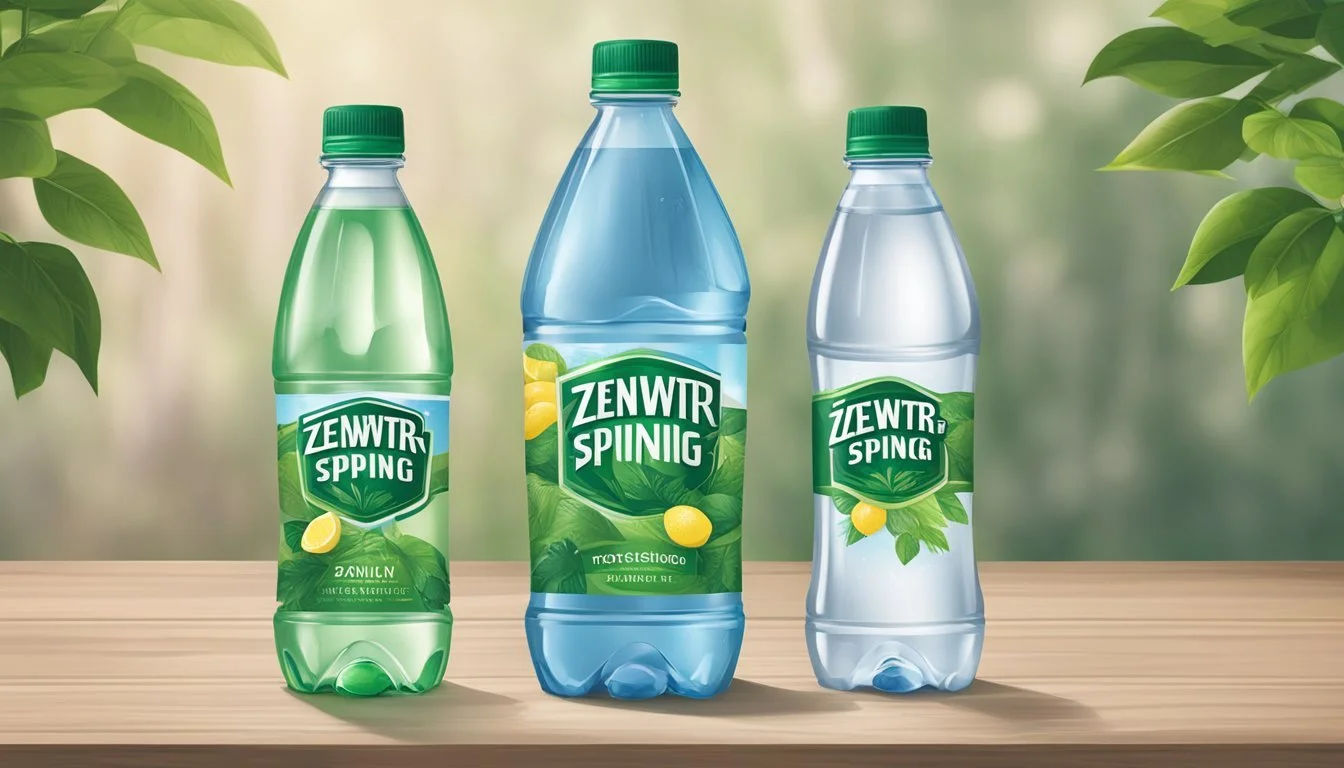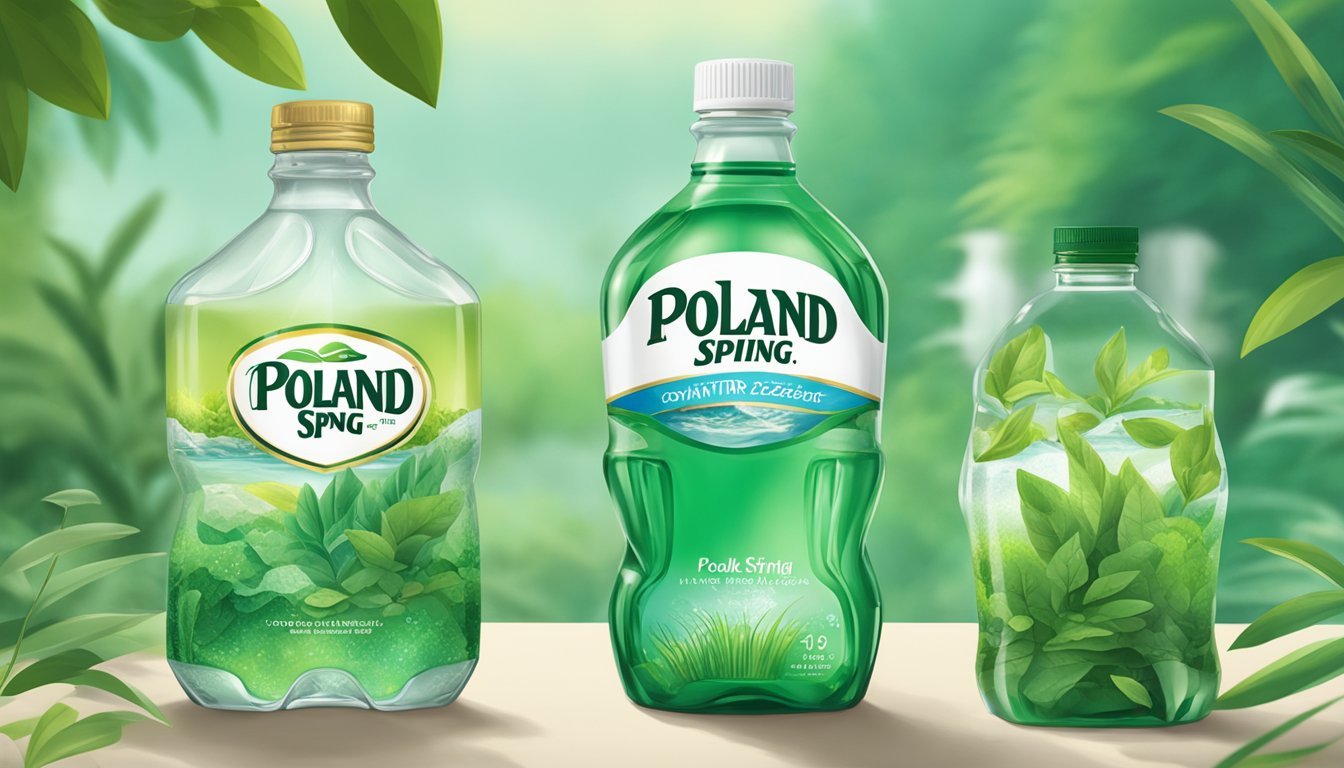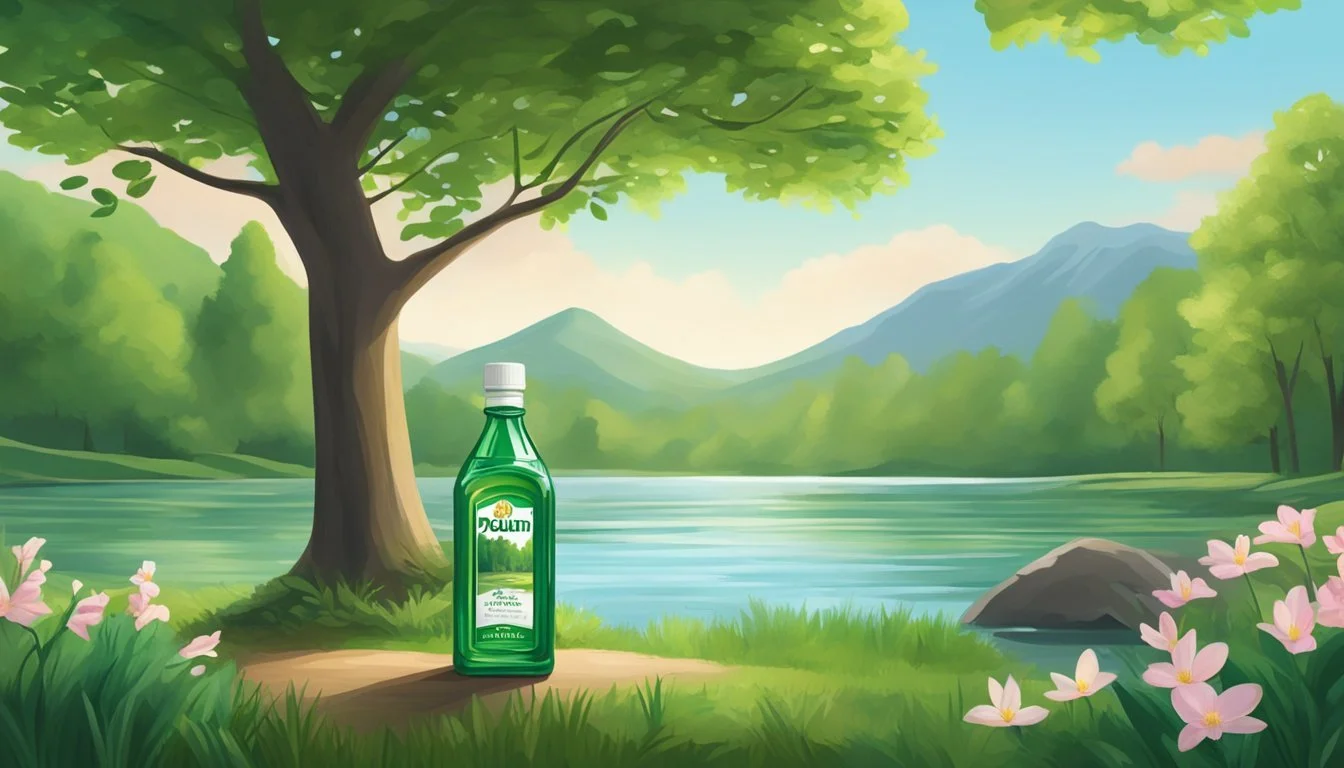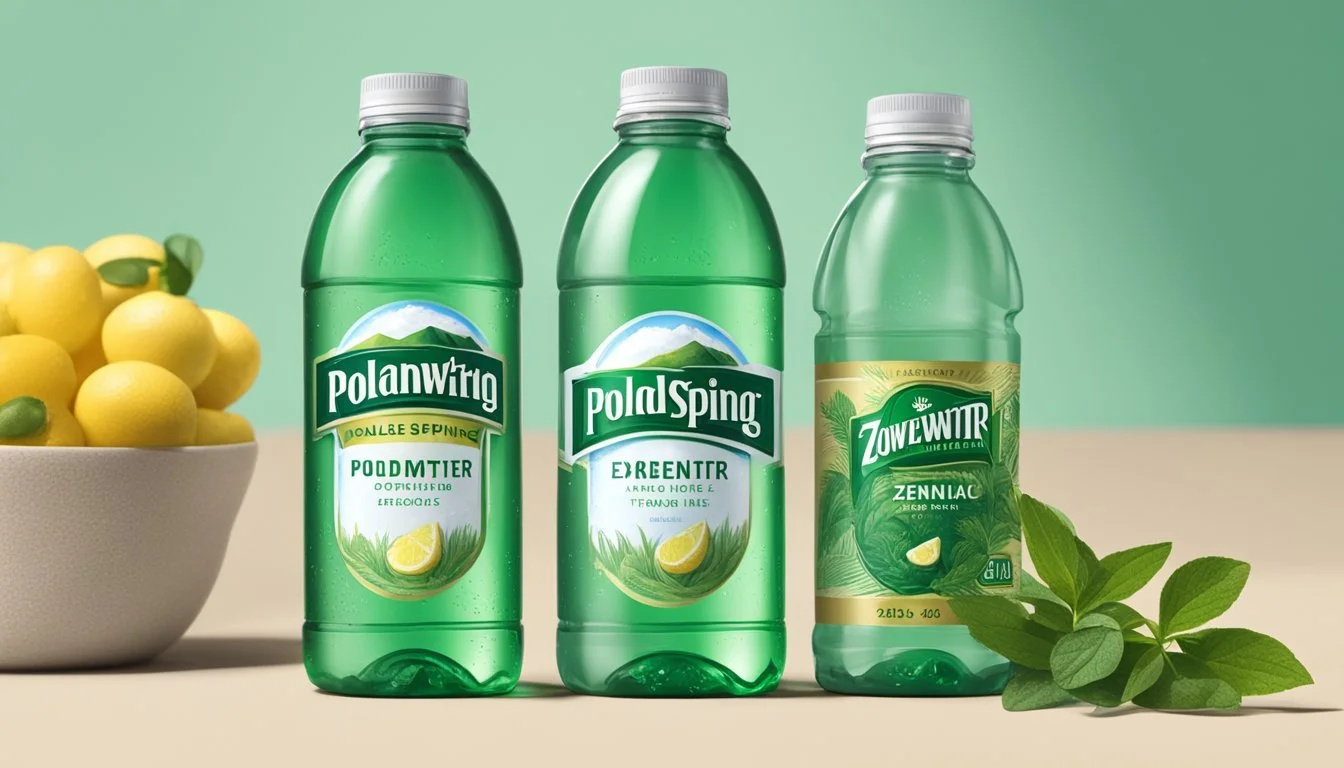Poland Spring vs. Zenwtr
The Ultimate Bottled Water Showdown
Poland Spring and Zenwtr are two popular choices in the bottled water market. While Poland Spring boasts a long history dating back to 1845 with its natural spring water from Maine, Zenwtr is known for its commitment to sustainability and its use of recycled plastics in packaging. This distinction sets the stage for a closer comparison of these brands based on taste, source, and environmental impact.
Poland Spring has been a household name for over a century and has had its share of controversies, including a class-action lawsuit challenging the authenticity of its spring water. Despite this, it remains a preferred choice for many due to its widespread availability and reliable taste. Zenwtr, on the other hand, emphasizes eco-friendliness and positions itself as a brand for the environmentally conscious consumer.
When choosing between Poland Spring and Zenwtr, consumers will weigh not only taste and source credibility but also the brand's impact on the environment. This comparison will help readers understand which bottled water aligns better with their personal values and preferences.
Background of Bottled Water Brands
Exploring the histories of Poland Spring and ZenWTR reveals the growth and evolution of these two bottled water brands, highlighting their origins and contributions to the increasing popularity of bottled water consumption.
Poland Spring: A Brief History
Poland Spring traces its origins to Poland, Maine, dating back to 1845. Initially a local spring known for its clear, crisp water, it quickly gained popularity.
By the late 19th century, it had expanded, becoming a staple in New England. The brand is renowned for sourcing water from multiple springs in the region, ensuring a natural and refreshing taste. Over time, Poland Spring became a trusted name in the bottled water industry, known for consistent quality and commitment to natural spring water.
ZenWTR: Brand Origins
ZenWTR entered the market as a premium alkaline water brand. Unlike traditional bottled waters, ZenWTR focuses on providing water with natural alkalinity, derived from deep ocean sources. Launched with an emphasis on sustainability, ZenWTR bottles are made from recycled ocean-bound plastic, reflecting a commitment to environmental responsibility.
ZenWTR’s branding highlights the benefits of alkaline water for hydration and balancing body pH levels, setting it apart from competitors. This innovative approach has positioned ZenWTR as a unique player in the bottled water market, appealing to health-conscious consumers.
The Rise of Bottled Water Consumption
The rise in bottled water consumption is linked to increasing health awareness and a shift towards convenience. In recent decades, bottled water has become the preferred choice for hydration, surpassing soda and other beverages.
Several factors contribute to this trend:
Health Benefits: Bottled water is perceived as a healthier alternative to sugary drinks.
Convenience: Easy access and portability make it a practical choice for busy lifestyles.
Taste and Quality: Brands like Poland Spring and ZenWTR offer distinctive flavors and purity, appealing to various consumer preferences.
The bottled water market continues to grow, driven by innovations and consumer demand for safe, clean, and convenient hydration options.
Water Quality and Purity
Poland Spring and Zenwtr follow strict standards to ensure high water quality and purity. Analyzing these standards provides insight into their methods and overall safety.
Assessing the Purity of Bottled Water
Purity is a critical aspect of bottled water, and both Poland Spring and Zenwtr emphasize this in their products. Poland Spring sources its water from multiple natural springs in Maine. This spring water is renowned for its cleanliness, undergoing minimal processing to maintain its natural purity.
Zenwtr, on the other hand, offers ultra-purified water achieved through advanced filtration techniques. Their process involves multiple stages, such as reverse osmosis, to eliminate impurities. This meticulous method results in water that's free from contaminants often found in less rigorously filtered brands.
To guarantee safety, both brands conduct regular testing for pollutants. These tests screen for substances like PFAS, heavy metals, and other potential hazards. Maintaining low levels of these contaminants ensures that the bottled water meets high purity standards.
Regulation and Safety Standards
The safety and regulation of bottled water fall under the jurisdiction of the Food and Drug Administration (FDA) and the Environmental Protection Agency (EPA). Both agencies set stringent guidelines to protect consumer health.
Poland Spring adheres to FDA regulations for bottled water, ensuring that their product is safe for consumption. This includes compliance with standards for physical, chemical, and microbial contaminants. The brand must meet specific criteria for quality controls and proper labeling.
Zenwtr also complies with these regulatory standards. Their water undergoes a purification process that includes multiple safety checks. Each batch is tested to meet or exceed the requirements set forth by the FDA and EPA.
The adherence to these regulations by both brands ensures that consumers receive water that is not only pure but also adheres to the highest safety standards. This regulatory oversight plays a crucial role in maintaining the integrity and trustworthiness of bottled water products.
Taste Profile Comparisons
Poland Spring and Zenwtr both offer unique taste experiences impacted by their mineral content and filtration processes. A closer look reveals how these elements shape flavor perceptions and consumer preferences.
The Role of Minerals in Taste
Minerals like calcium, magnesium, and potassium significantly influence water taste. Poland Spring sources its water from springs in Maine, imparting a distinct mineral profile that includes a subtle, refreshing taste.
Zenwtr emphasizes its purity, often deriving from a complex filtration process that removes impurities and adds electrolytes for a balanced, clean flavor. This process can lead to a crisper, more neutral taste compared to spring water.
Consumers sensitive to taste differences may prefer Poland Spring for its natural mineral content, while others might opt for Zenwtr's consistent, purified taste.
Conducting a Blind Taste Test
A blind taste test can highlight the perceptible differences between Poland Spring and Zenwtr. In such tests, participants typically cannot identify the brand but can note distinct taste features.
Poland Spring often receives praise for its slight mineral tang, which some find more refreshing and natural. Zenwtr, characterized by its electrolyte-enhanced formula, usually delivers a smoother, almost flavorless experience.
These tests reveal that personal taste preference plays a crucial role. Factors like subtle mineral notes or the absence of aftertaste influence individual choices. Conducting a blind test helps consumers identify which profile they find more appealing.
Health and Hydration
Hydration is vital for maintaining overall health, and different bottled water brands offer varying benefits regarding hydration and mineral balance. This section explores the importance of staying hydrated and the role of electrolytes and minerals in promoting optimal health.
The Importance of Hydration
Proper hydration is essential for physiological functions, including temperature regulation, joint lubrication, and nutrient transport. Both Poland Spring and ZenWTR provide pure and clean sources of water to support these crucial body functions.
Poland Spring is sourced from natural springs in Maine, ensuring a consistent supply of fresh water. ZenWTR, known for its natural alkalinity, offers a clean hydrating option with no artificial additives.
Key Points:
Regulation of body temperature
Lubrication of joints
Transport of nutrients
Electrolytes and Mineral Balance
Electrolytes such as sodium, potassium, and magnesium are crucial for maintaining the body's electrolyte balance. Poland Spring contains natural minerals from its spring sources, which contribute to the water's taste and hydration benefits.
ZenWTR stands out due to its natural alkaline properties, which maintain a balanced pH, supporting the body's electrolyte levels without artificial additives.
Key Points:
Sodium: Essential for fluid balance
Potassium: Supports muscle function
Magnesium: Plays a role in energy production
Both Poland Spring and ZenWTR offer health benefits through hydration and natural mineral content, each in its unique way, without unnecessary additives.
Environmental Considerations
When comparing Poland Spring and ZenWTR, it is important to examine their sustainability efforts, impact on aquifers, and the materials used in their packaging. Both companies claim to prioritize the environment, yet their approaches and results differ significantly.
Sustainability and Bottling Practices
Poland Spring sources its water from multiple natural springs in the U.S., focusing on maintaining the sustainability of these water sources.
ZenWTR, on the other hand, proudly promotes its use of 100% post-consumer recycled bottles made from ocean-bound plastic. This practice underscores ZenWTR's commitment to reducing plastic pollution.
Poland Spring has faced scrutiny for its plastic bottling practices despite efforts to incorporate recycled materials. ZenWTR's transparent approach to sourcing and recycling sets it apart as more environmentally conscious in terms of packaging practices.
Aquifer Impact and Water Rights
Poland Spring's extraction processes involve tapping into natural springs, raising concerns about the long-term impact on local aquifers. Critics argue that large-scale extraction can deplete local water resources and negatively impact ecosystems.
ZenWTR positions itself as an environmentally friendly brand with a focus on avoiding such ecological disruptions. By not heavily relying on specific aquifers, ZenWTR minimizes its direct impact on water sources, promoting a more sustainable approach.
The Packaging Debate: Plastic vs. Alternative Materials
Poland Spring uses traditional plastic bottles, which, despite some being made from recycled content, contribute to environmental concerns such as plastic waste in landfills and oceans.
ZenWTR adopts a different strategy by using bottles made entirely from ocean-bound plastic, aiming to reduce marine pollution. This innovative approach not only recycles plastic but also prevents further contamination of water bodies.
However, the use of any plastic can still raise concerns about waste and recycling efficacy. Alternatives like biodegradable or reusable materials are yet to be widely adopted in the industry but represent a growing area of focus for reducing environmental footprints.
By comparing these practices, consumers can better understand which brand aligns more with their environmental values.
Comparing Water Sources and Types
When choosing the right bottled water, it’s crucial to understand the origin and properties of different types. This section will explore the differences between spring water and purified water, the unique features of natural springs, and the importance of alkaline water and pH levels.
Spring Water vs. Purified Water
Spring water is sourced directly from natural springs and undergoes minimal processing to retain minerals and natural flavor.
Poland Spring: This water is collected from various springs in Maine. It's known for its clean taste and natural mineral content.
ZenWTR: In contrast, ZenWTR is purified water, often sourced from municipal supplies before undergoing advanced filtration processes like reverse osmosis. The aim is to remove impurities and contaminants, resulting in a very clean taste.
Key Differences:
Source: Natural springs vs. municipal sources.
Processing: Minimal for spring water, extensive for purified water.
Mineral Content: Naturally retained in spring water, often reduced in purified water.
Unique Properties of Natural Springs
Natural springs are geological formations where groundwater naturally emerges from the earth’s surface. This water often contains a myriad of dissolved minerals.
Poland Spring: The water from Poland Spring's sources is rich in minerals like calcium and magnesium, contributing to its distinct taste and health benefits.
Importance:
Mineral Content: Natural springs provide essential minerals that contribute to water’s taste and nutritional value.
Geological Influence: The type of rock through which the water flows can significantly impact its mineral composition and quality.
Consumers: Those seeking water rich in natural minerals often prefer spring water due to these unique properties.
Alkaline Water and pH Levels
Alkaline water has a higher pH level than regular drinking water, which some believe can neutralize acid in the body.
ZenWTR: Often marketed as having a higher pH, ZenWTR appeals to those looking for potential health benefits associated with alkaline water.
Poland Spring: Typically has a neutral pH, balancing purity with mineral content.
Focus on pH:
pH Levels: Poland Spring typically has a neutral pH around 7, while ZenWTR may have a pH of 8 or higher.
Health Claims: While some suggest alkaline water can aid in hydration and balancing body pH, scientific evidence remains mixed.
Considerations: Choosing between these types depends on personal health preferences and desired benefits.
Brand Philosophies and Consumer Trust
Poland Spring and ZenWTR are known for distinct corporate ethics and commitment to their communities, essential aspects that influence consumer trust and brand loyalty. Both brands aim to meet the growing demand for sustainable choices in bottled water.
Corporate Ethics and Community Impact
Poland Spring, established under Nestlé's BlueTriton brand, emphasizes environmental sustainability. It incorporates third-party testing to exceed purity standards set by the FDA and EPA. They are committed to responsible water sourcing and reducing their ecological footprint.
ZenWTR, in contrast, is positioned prominently on its environmental mission. The brand utilizes 100% recycled ocean-bound plastic for its bottles, actively contributing to ocean cleanup efforts.
Both brands have significant community impact initiatives. Poland Spring invests in local communities and environmental stewardship in the Northeast U.S., while ZenWTR focuses globally on reducing plastic waste and promoting recycling.
Consumer Loyalty and Trust Metrics
Consumer trust is critical for both Poland Spring and ZenWTR.
Poland Spring leverages its long history and strict adherence to regulatory standards to build consumer confidence. They maintain a reliable reputation by meeting spring water quality requirements and investing in sustainability efforts, appealing to environmentally conscious consumers.
ZenWTR, although newer, quickly established trust through transparency in sourcing and its eco-friendly mission. They appeal to consumers who prioritize sustainable practices and environmental impact in their purchasing decisions.
In terms of loyalty metrics, Poland Spring often benefits from brand recognition and loyalty due to its long-standing market presence. Conversely, ZenWTR attracts a niche, growing base of eco-conscious consumers seeking alternative brands that align with their values.
Marketplace and Consumer Choices
When considering Poland Spring and Zenwtr, consumers often look at variety, availability, pricing, and how marketing influences their preferences. These factors play significant roles in shaping purchasing decisions.
Variety and Availability of Bottled Water
Poland Spring offers a wide range of bottled water options. They provide various sizes from small single-serving bottles to larger gallon containers. This brand is widely available across supermarkets and convenience stores in the US, making it a convenient choice.
Zenwtr, on the other hand, markets itself as a premium brand with a focus on environmental sustainability. Their availability is more niche, found in health stores and upscale grocery chains. The brand emphasizes its unique source and eco-friendly packaging, playing to a different consumer base than Poland Spring.
Pricing: Premium vs. Value Brands
Pricing is another pivotal factor. Poland Spring is often categorized as a value brand, making it affordable for a broader audience. This aligns with their extensive distribution, keeping costs low and competitive.
Zenwtr is positioned as a premium brand with higher pricing. The premium cost is justified through their unique selling points such as eco-friendly packaging, superior water filtration processes, and marketing efforts that highlight health benefits. Consumers looking for high-quality, environmentally-conscious products are willing to pay extra for Zenwtr.
The Influence of Marketing on Consumer Preference
Marketing strategies significantly shape consumer preferences. Poland Spring's advertising emphasizes its natural spring source and long-standing reputation. Their marketing campaigns are designed to attract a wide demographic by focusing on reliability and natural quality.
Zenwtr leverages its premium status through targeted marketing that speaks to health-conscious and environmentally aware consumers. They utilize social media influencers and high-end branding to craft an image of exclusivity. This strategy appeals to consumers who prioritize health and sustainability, helping Zenwtr to carve out a distinct market segment.
Future Trends in Bottled Water
Innovation continues to shape the bottled water market. Recent years have seen brands like ZenWTR focusing on sustainability. Their bottles are made from 100% recycled ocean-bound plastic, reflecting a significant shift toward environmentally friendly packaging.
Consumer trends indicate a growing desire for premium and functional water. Products boasting added minerals, electrolytes, and alkaline properties attract health-conscious consumers. Poland Spring and ZenWTR have both adapted to these preferences, emphasizing purity and natural properties.
Smart packaging is emerging as an exciting development. Some companies are exploring QR codes and smart labels that provide detailed information about water sources and quality. This innovation caters to consumers' demand for transparency and traceability.
The functional water market is expanding rapidly. According to data from Statista, it's projected to surpass $5 billion soon. Brands are increasingly offering waters infused with vitamins, antioxidants, and even CBD to appeal to niche markets.
Sustainability is a key focus for the future. Beyond using recycled materials, companies are investing in biodegradable and compostable packaging solutions. Reducing plastic waste remains a primary goal, aligning with global environmental concerns.
Emerging markets in Asia and Africa provide growth opportunities. Rising incomes and increased awareness of health benefits drive demand in these regions. Bottled water companies are positioning themselves to meet this expanding consumer base.
The future of bottled water also involves technological advancements. Water purification technologies are improving, ensuring safer and better-tasting products. Innovations in filtration and mineral enhancement are likely to enhance product quality further.
These trends illustrate a dynamic and evolving market. Brands that adapt to these changes are better positioned to lead in the coming years.
More About Poland Spring
Acqua Panna vs Poland Spring: Which Bottled Water is Better?
Boxed Water vs Poland Spring: Which Bottled Water is Better?
Core Hydration vs Poland Spring: Which Bottled Water is Better?
Ice Mountain vs Poland Spring: Which Bottled Water is Better?
Icelandic Glacial vs Poland Spring: Which Bottled Water is Better?
Mountain Valley Spring Water vs Poland Spring: Which Bottled Water is Better?
Nestle Pure Life vs Poland Spring: Which Bottled Water is Better?
Poland Spring vs Aqua Carpatica: Which Bottled Water is Better?
Poland Spring vs Cascade Mountain: Which Bottled Water is Better?
Poland Spring vs Castle Rock: Which Bottled Water is Better?
Poland Spring vs Crystal Geyser: Which Bottled Water is Better?
Poland Spring vs Crystal Lake: Which Bottled Water is Better?
Poland Spring vs Essence pH10: Which Bottled Water is Better?
Poland Spring vs Hawaii Volcanic: Which Bottled Water is Better?
Poland Spring vs Hawaiian Springs: Which Bottled Water is Better?
Poland Spring vs Kirkland Signature: Which Bottled Water is Better?
Poland Spring vs Liquid Death: Which Bottled Water is Better?
Poland Spring vs Proud Source: Which Bottled Water is Better?
Poland Spring vs Purely Sedona: Which Bottled Water is Better?
Poland Spring vs Richard's Rainwater: Which Bottled Water is Better?
Poland Spring vs San Pellegrino: Which Bottled Water is Better?
Poland Spring vs Simple Truth: Which Bottled Water is Better?
Poland Spring vs Solan de Cabras: Which Bottled Water is Better?
Poland Spring vs Talking Rain AQA: Which Bottled Water is Better?
Poland Spring vs Weird Water: Which Bottled Water is Better?
Poland Spring vs Whole Foods 365: Which Bottled Water is Better?
Poland Spring vs Whole Foods Italian Still Mineral water: Which Bottled Water is Better?
Poland Spring vs Zephyrhills: Which Bottled Water is Better?








